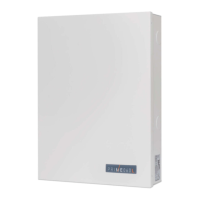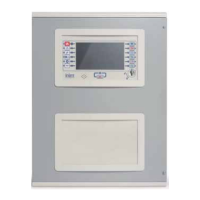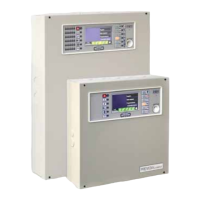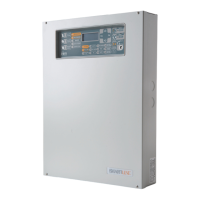18 Installation
Anti-intrusion control panels
Chapter
3
Installation
3-1
Installing the control panel
3-1-1
Wall mounting
The control panel should be installed in a place that is out of sight and that does not allow
easy access to outsiders.
1. Open the metal enclosure of the control panel by removing the front plate.
2. Note the mounting holes in the corners on the metal back plate of the control panel
enclosure (Table 2-5: Control panels - description of parts, K) as well as the hole for the
anti-tamper device (Table 2-5: Control panels - description of parts, P).
3. Using the metal enclosure, mark the mounting holes on the wall. Drill the holes taking
care not to drill in the vicinity of electrical wiring, plumbing or gas pipes, etc.
4. Insert the 6mm wall plug (supplied) into the hole for the anti-tamper device.
5. Insert a wall plug into each of the other holes (recommended diameter 6mm).
6. Pull the cables through the cable entry.
7. Using the wall plugs, attach the enclosure to the wall.
8. Replace the front plate of the metal enclosure.
Note
The cable gland must be flame class rating V-1 or higher.
3-1-2
Connecting the Mains power supply
The control panel must be powered through a separate line coming from the mains box. The
line must be protected by a safety-standards compliant circuit breaker (trip switch).
The circuit breaker (trip switch) must be positioned externally to the apparatus and should be
easily accessible. The distance between contacts must be at least 3mm. The manufacturer
strongly advises the use of a magnetothermic switch with C intervention curve and maximum
nominal current - 16A.
The electrical earthing system of the site must be compliant with all safety standards and laws
in force.
DANGER!
Ensure that the Mains is switched Off during the mains connection phase. Danger of electric
shock.
1. Pull the power-supply cables through the cable entry [A].
2. Connect the mains power supply to the appropriate terminals [B] (Table 2-5: Control
panels - description of parts, F).
Follow the indications on the label [C] located near the mains terminal board.
For a safety standard compliant installation the phase wire must be connected to the “L”
terminal and the neutral wire to the “N” terminal.
3. Ensure that low voltage security wires or signal wires do not come into contact with
dangerous voltage points.
Using a cable tie, bunch the wires together and connect them firmly to one of the cable
hooks on the back of the enclosure.
Note
The end of a stranded wire must not be consolidated with soft soldering in points where the wire is
subjected to contact pressure.
4. Crimp the earth wire to the eyelet terminal [E] (included).
5. Using the nut (supplied) attach the wire with the eyelet terminal to the earthing screw
[F] (Table 2-5: Control panels - description of parts, H) of the control panel.
6. Ensure that terminal “ ” of the power supply module [G] and the front plate [H] are
connected to earth.
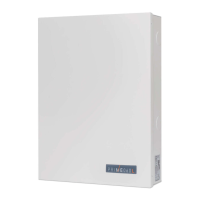
